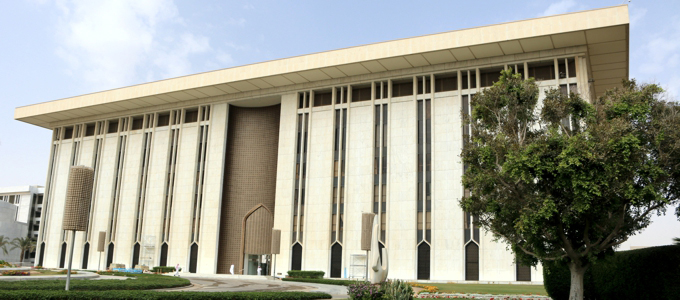In an ever-evolving world, digital transformation is more than just a buzzword. It essentially involves using digital technologies to transform the existing processes into more efficient and effective workflows.
Digital transformation seeks to replace manual work and old resources with cutting-edge technologies for faster growth.
Not only are organizations striving to build more digitally robust operations, but they are also creating systems that blend humans and technology. In reimagining the way businesses work, digital transformation is creating a huge impact on the global economy as well. The World Economic Forum’s report indicates a $100 trillion profit resulting from the adoption of advanced technologies across industries.
Madhan Kumar, the Manager of Planning and Budgeting at Bharat Heavy Electricals Limited (BHEL) comments:
“Digital transformation has relieved PSU executives of the redundant calculations, documentations and procedures, this lets us concentrate more on decision-making, empowering us with useful data which was not readily available to use before.”
So, together with making life more convenient, technology is now acting as a bridge to transition from the past economic setup to a new and refined one for the future. With the help of digital transformation, the scope of global development is moving toward a more optimistic future for job seekers as well—let's see how.
4 Ways in which the Digital Era is Disrupting the Economy, and Employment Sector
Emergence of AI in Business Operations
By analyzing the troves of data generated every day, Artificial Intelligence is leading the progress towards a digitally empowered world.
AI is helping businesses optimize their operations for greater productivity by automating manual tasks. More importantly, it can quickly process a massive sum of data to provide the best insights and direct human action in the right place.
From decision-making and product iteration to communication and marketing, AI can be leveraged by businesses for an array of purposes.
While profit-making organizations typically deploy AI to provide exciting features to enhance human convenience, the technology has created a massive disruption in the social sector. With its power to read, process, and organize huge volumes of data, AI has made inroads in non-profit and public sectors.
The Canadian government’s move to leverage AI for eliminating loopholes in their social welfare system is a great example of this.
Primarily, AI is helping the social sector businesses in the following ways:
- Computer Vision - The use of AI algorithms and autonomous vehicles has disrupted the transportation landscape with more intelligent technologies.
- Speech Recognition - Robots are now helping the elderly worldwide with better care and helping with the shortage of nurses.
- Natural Language Processing - NLP processes audible and textual content to augment research from data scores that can be leveraged for multiple purposes across industries.
- More room for tech-skilled youth in the workforce
While many regard digital advancement as a factor for the loss of human jobs, the reality is quite different.
In a technologically revolutionized world, new roles and industries have come up. The role of a search engine optimization specialist and the varied roles in the digital security industry best exemplifies this.
These roles are more suited for the digital natives who grew up under the influence of technology. Thus, while digital transformation eliminates the repetitive manual jobs, it helps create technically stimulating one's for the youth.
The Digitization and Future of Work report by the Centre for European Economic Research shed light on this fact by concluding how 50% of Germany’s organizations deploy advanced technologies and thereby create more jobs.
Organizations adopting new technologies with automation are boosting their growth and creating a different yet more technically sound workforce.
IEEE indicates the changing nature of jobs with the force of digital transformation. The economy’s future will be based on knowledge, creativity, and innovation closely interconnected with technology.
Enhanced Productivity and Efficiency
If there’s one thing that technology does best for any organization, it is—greater employee productivity and engagement.
With the right set of tools, it is easy to create workflows and achieve the desired results through optimization. When you have the tools to automate the manual tasks, you can automatically boost morale among the employees. A study by Zensar shows how employees work with greater motivation when they are involved in intellectually challenging roles.
Moreover, digital technology has also enabled better collaboration among teams. With online workplaces—like Slack and MS Teams—businesses can work with their entire team remotely.
Equipped with these resources, organizations can focus their HR efforts on capacity building and improve the overall efficiency of their team.
Cost-Effective Solutions with a Rising Profits Graph
A Boston Consulting Group study shows that companies using Big Data in their operations earn 12% more than those who don’t.
The reason for this income disparity is clear—technology drives profits.
Businesses can use a suite of digital technology to their advantage in many ways. While replacing spreadsheets with tools as Airtable helps automate various processes to increase efficiency, digital transformation can provide many other benefits.
- Data Analytics and Decision-Making - Digital technology boosts decision-making by converting raw data into business intelligence.
- Reductions in Overhead Costs - A suite of automation tools can help manage business resources and minimize overhead costs in the process.
- Better Customer Experience - Digital technologies help businesses deliver more enhanced customer experiences through sustainable means.
These multidimensional benefits from digital transformation have increased profits for 80% of organizations, as per SAP Center for Business Insights and Oxford Economics report.
Compassion International’s journey from paper to paperless brilliantly demonstrates the power of digital technology. A global non-profit leader in sponsorship-based child development, Compassion International replaced its paper forms with Microsoft Azure and saved over 300,000 years in a year. They also accelerated their communication system and witnessed a steep growth by investing in 800 IT systems.
When organizations have a solid technological infrastructure, they are bound to increase their contributions to national growth. Greater profits naturally mean a rising graph of the national GDP. Digital transformation is spurring the Chinese economy, and the result is visible in its rapidly scaling GDP.
Conclusion
Statista estimates the overall expenditure on digital technology and automation will increase from $0.6 trillion in 2017 to $2.39 trillion in 2024.
At least 13% of organizations employing 1000+ employees are working in a complete cloud environment, with 81% of organizations operating with one segment of their operations on the cloud.
These numbers speak volumes about how digital transformation has become the need of the hour for fuelling business potential and economic growth.
This blog outlines the multiple ways in which digital technology is boosting the global economy. Not only is it empowering businesses to scale greater heights with optimization and productivity, but it is also procuring better profits and jobs for the people.






Comments